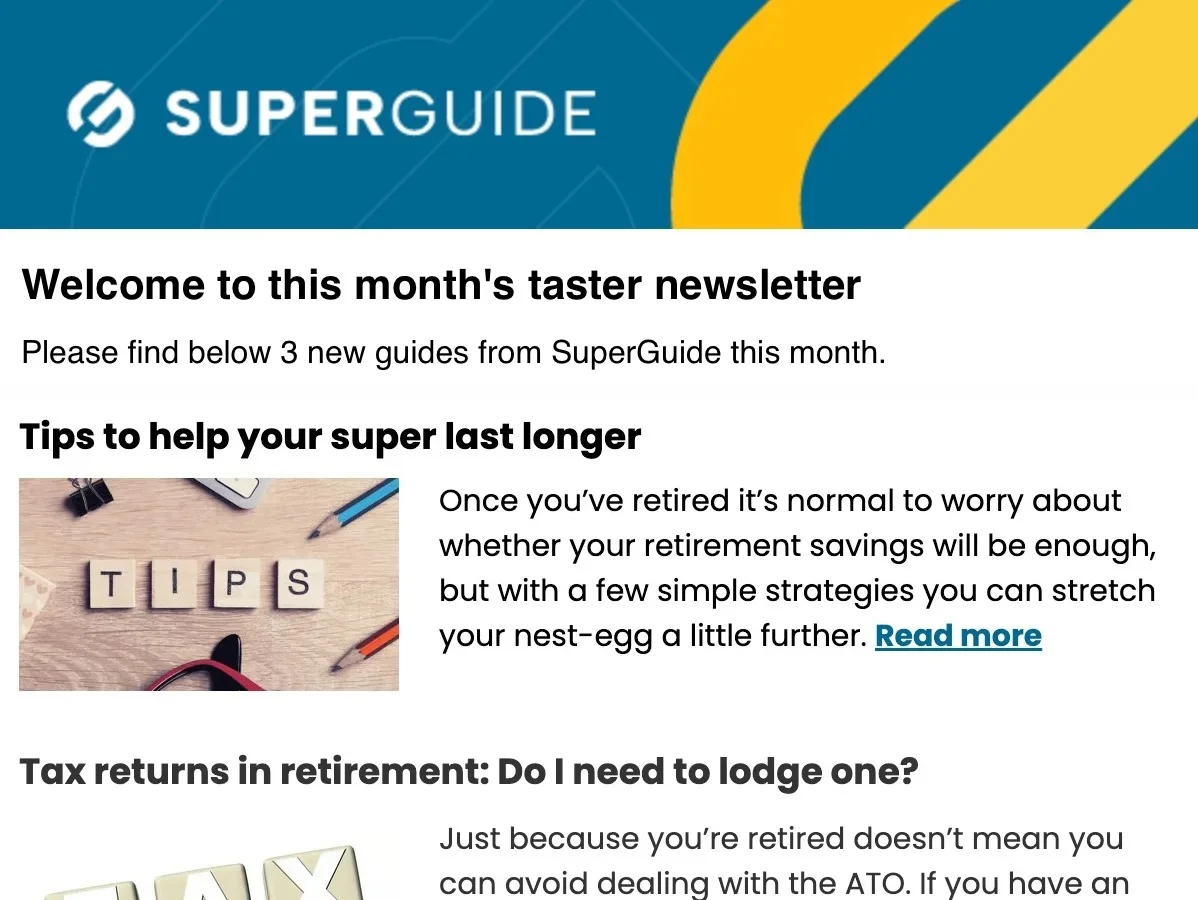In this guide
Whether by choice or necessity, more Australians are embracing working for longer. Yet there are obstacles to overcome when you’re looking for work in your 50s and beyond.
While stereotypes of older workers being out of touch persist, research shows a growing number of over 50s are ahead of the game when it comes to being tech savvy and keeping up with the latest trends.
‘Seniorpreneurs’ on the rise
According to research from the Swinburne University of Technology, Australia’s new wave of entrepreneurs is aged between 55 and 64. These ‘seniorpreneurs’ are experienced, driven business owners who head up around 34% of Australian firms and are the fastest growing segment of entrepreneurs in the country.
Associate Professor Alex Maritz from Swinburne University says older workers often have more skills, time and money to contribute to the economy than younger people.
“There has been little recognition of the potential of older Australians to participate in start-ups and turn them into larger businesses that employ people, or of the need for older Australians to create their next job, not just apply for it,” he says.
Sometimes, older Australians simply want to stay in careers they enjoy.

Free eBook
Retirement planning for beginners
Our easy-to-follow guide walks you through the fundamentals, giving you the confidence to start your own retirement plans.
"*" indicates required fields
When careers provide meaning
The Australian Seniors 100 Year Lifespan Report (released in 2020 but still relevant) shows more older Australians are delaying retirement to stay in the workforce. Of the 5000 over 50s surveyed, more than half (53%) said their careers define them, or have defined them in the past, and two in five (40%) planned to continue working for as long as they can.
Unfortunately, almost nine in 10 (87%) believed ageism in the workplace is a serious issue, and four in five (80%) thought the government isn’t doing enough to entice businesses to employ older Australians.
The research also suggested ageist views can lead to poorer physical and mental health and society itself could be adding to the fears that come with ageing.
The reality, however, is that many of us are grappling with worries as we age. More than two in five (41%) fear losing their physical health and almost three in ten (29%) fear losing their mental health as they get older.
Ageism and sexism still an issue
Barbara, 60, was offered a retrenchment at age 57 and took it. After working as a personal assistant in Sydney for almost a decade, she was ready to find something new. Despite top-shelf credentials and years of experience, Barbara found landing another job more difficult than she had anticipated.
“I applied for many positions, but it always came down to me and one other applicant,” says Barbara. “I kept missing out and I convinced myself that it was my age. The other applicants were younger than me and it is cheaper to employ someone less experienced.
“Some companies prefer to have a younger person at reception because it gives a better first impression that their business is up to date. After a while my self-confidence suffered.”
Susan, 65, is an executive in the fashion industry. She says women both young and old are turning to cosmetic surgery to hide the signs of ageing. “We live in a society that worships youthfulness and beauty,” says Susan. “Women over 50 feel the pressure to remain young and attractive if they want to stay employed.”
2026 SMSF calendar
Our free calendar includes due dates for important documents plus suggested dates for trustee meetings and other strategic issues for your SMSF.
"*" indicates required fields
Of course, men experience ageism as well, but the research shows that as men age, they are viewed as more valuable and competent in the workplace, whereas women lose credibility with every new wrinkle.
“Physical appearance matters more for women than men,” says Susan. “When looking for employment, older women come up against ageism and sexism. It’s a double whammy.”
Switching career paths – 3 success stories
These days, we no longer imagine having a job for life. Career changes later in life can be daunting, but there are many financially secure, low-stress and fulfilling career options for experienced older workers.
Julie, 58, trained as a nurse in the UK before migrating to Australia almost 30 years ago. In her thirties she changed her career course and became a journalist. She now runs her own social marketing company from the Gold Coast.
“Because I work remotely, age is rarely a factor,” says Julie. “That is until I meet clients face to face and they’re a little surprised to see that I’m not a young thirty-something like most people in marketing. The average age of marketing directors is 34.”
Julie believes experience is key to her success. “Qualifications are important, but so is life experience and independent learning,” she says. “You don’t have to be a journalist to write a blog and you don’t have to train in IT to build a website. More often than not, it’s our fear of failure that holds us back.”
After being in IT her whole working life, Bambi Price started her own IT business at age 50. “As I entered this phase of my life, I still felt really young and I knew I had a lot more to give,” she says.
Bambi, now 66, recently launched a website, War on Wasted Talent, that connects employers with mature-age professionals wanting to maintain employment as they age.
Supercharge your retirement

Get pension and retirement tips and strategies with our free monthly newsletter.
"*" indicates required fields
“Entrepreneurship is commonly seen as being just for young people, but most entrepreneurs are over 40. There is an untapped pool of people over 50 who wish to start a new enterprise to generate revenue for themselves, perhaps for the first time,” says Bambi.
Neil, 63, is a businessman from Port Macquarie. Looking to change his career direction, Neil took on a franchise with a dog grooming company three years ago. He paid $15,000 and in less than a year doubled his income and built a loyal customer base through hard work and social media – who doesn’t love a cute dog pic?
“It’s about keeping overheads down and putting in the hours or you won’t succeed,” says Neil. “Before I bought the franchise, I did two trial days and when I got home my wife said, I don’t even need to ask how it went; I can see it on your face.”

Leave a Reply
You must be logged in to post a comment.